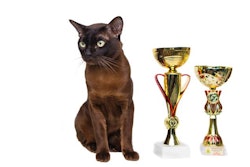WellPet, according to CEO Camelle Kent, has all the benefits of being a 100 percent independent company combined with being just the right size to take advantage of all its resources.
“We’re still family owned, but we have a nice balance of having size that allows us to innovate and do things like purchasing Sojos (in January 2016) and WHIMZEES (in February 2017), or restaging our Holistic Select brand, which has a 100-percent independent focus,” says Kent.
The company’s history seems to bear that out. According to Kent, WellPet was the first brand to introduce grain-free recipes and is a forefather in the natural pet food space. WellPet’s focus now is the “fourth category,” the company’s name for the growing fresh/freeze-dried/frozen and raw categories in premium and superpremium pet food.
“We’re really excited about where the fourth category is going,” says Kent. “We’ve been doing a lot of work in the dehydrated space with our Wellness TruFood brand. [In 2017] we introduced our first kibble-plus product, which is called Wellness CORE RawRev, and that’s our product that takes our high-protein, grain-free CORE kibble and adds 100 percent freeze-dried raw meat. It’s the fastest-growing segment within the fourth category because it’s not requiring pet parents to implement a change in behavior — they can still just pour the food — and how we differentiate is we’re the only ones who use pure meat.”
And now that the company has the Sojos facility at its disposal, WellPet has expanded in-house specialty production capabilities. “[This] is allowing us to produce the freeze-dried meat ourselves, getting it to our facility in Indiana where we produce our kibble, and so be in complete control of the manufacturing process, which nobody else is able to do right now,” says Kent.
WellPet’s opportunities to stand out in pet food
WellPet credits a significant number of its opportunities to its ownership and its position in the industry.
“Being independent and family-owned allows us to innovate at a faster pace, I think, than some of the bigger guys,” says Kent. “I know that when you work at a more traditional environment, the process you go through to introduce new products is incredibly lengthy. So, I think we’re able to react to industry trends and changing consumer dynamics at a faster rate than most of our competitors can.
“Equally, because of being family-owned by the Berwind family specifically, I think we have the right level of resources to be able to invest in new technologies and new facilities,” she says. “Owning all our own facilities that we produce our food in sets us apart from the smaller guys that you could say can innovate at a fast pace, as well. It’s that balance of being able to provide new products and innovation, which I really think is going to be what allows pet specialty to continue to differentiate against food/drug/mass, and being able to do so in our own facilities.”
Kent also said she credits the company’s people and their commitment to ensuring WellPet’s continued success.
“What sets us apart is the people who work here and their unwavering approach to nutrition,” she says. “I think one of the first things our head of R&D said to me when I started at WellPet was, ‘when you think about what you feed your dog or cat, they get all their nutrition from that morning and evening meal that you put down. So, what we choose to put into our food in terms of providing them with a complete and balanced diet is most important’. It’s not like humans, where we can eat nachos one day and a salad the next day; dogs and cats depend totally on us for their nutritional choices. I think having a team that understands that, and thinks about that in every decision they make — from a quality, from a food safety, from an ingredient choice standpoint — is an incredible differentiator for us.”
Retail partnerships and e-commerce
Kent says pet food companies, particularly those dealing in the pet specialty retail space, must be cognizant of the balance between the needs of their retail partners and the practicality of being available online.
“The independents and brick-and-mortar retailers are really needing to have a reason for pet parents to still come into their stores, versus going to food/drug/mass or going online to buy a product,” says Kent. “And I think the way they’re going to be able to keep people coming into their stores is to offer the more innovative products, the products that probably need a bit more explanation from store associates, products that you probably need some help explaining how to use or how to store. That’s where I think our retail partners can really drive differentiation.”
That’s where the fourth category comes in, and why Kent says she believes it will be “a billion-dollar category by 2020.”
At the same time, there’s no point in ignoring e-commerce trends in the hopes they’ll be a passing fad.
“I think for us, the internet caught everybody in the pet space a little bit by surprise,” says Kent. “The idea initially was that the cost to ship a 26-pound bag of dog food would be prohibitive, and we didn’t expect it to grow as fast as it has online. As a brand it’s important to be available online so those shoppers who only want to shop online can find us. As we see the continuing growth of millennials, from a purchasing power standpoint as well as a pet ownership standpoint, it would be unrealistic not to have our brand available with online retailers.”
Maintaining the balance between retailers and e-commerce is vital, and will allow everyone to succeed, according to Kent. “I think that will allow brick and mortar to compete at what they’re good at, which is in-store experience, offering education and added benefits (such as grooming, walking or daycare), and allow e-commerce to compete on what it competes on, which is convenience and having products shipped to homes,” she says.
The future of WellPet in the specialty space
According to Kent, WellPet will continue to focus on pet specialty, and aims to fill a few different market needs that she says are being underserved at the moment.
“From a product innovation standpoint, a lot of people are competing in the dog space, but we have a lot of really exciting innovations coming under cat,” she says. “We believe that if we can get natural cat to be a similar percentage as natural dog of total food, it will be about a 1.6-billion-dollar opportunity. So, you’ll see us being very focused on how to have more recipes and more formulas, and making our whole line grain free under cat. At the moment, we’re the number one natural wet cat brand in the marketplace, so you’ll see us continue to expand there.”
Of course, there’s the fourth category, which WellPet intends to continue innovating in.
“We don’t think anybody’s cracked the code on the fourth category for cat, so you’ll see us really accelerating how we think in that space,” says Kent. “Again, under dog, I think a lot of that activity is going to come in the fresh/raw/frozen space, so you’ll see us continuing to evolve what we offer in the fourth category for dog. Particularly it’s very hard to get people to change their habits, so if we’re able to develop products that don’t necessarily require a change in the pet parent’s behavior, that keeps it simple, keeps it clean, I think that’s how we can really drive the fourth category even faster than it’s growing at the moment.”
Just the Facts
Headquarters: Tewksbury, Massachusetts, USA
Facilities: Mishawaka, Indiana, USA; Minneapolis, Minnesota, USA; Veendam, The Netherlands
Officers: CEO Camelle Kent, Chief Financial Officer Nick Deldon
Sales: Upwards of US$400 million in 2016
Brands: Wellness Natural Pet Food, Old Mother Hubbard, Holistic Select, Eagle Pack, Sojos, WHIMZEES
Distribution: WellPet has global distribution
Employees: Approximately 400
Website/Social Media: www.wellpet.com; www.wellnesspetfood.com; www.holisticselect.com; www.oldmotherhubbard.com; www.eaglepack.com; www.Sojos.com; www.whimzees.com
WellPet: Giving back through the WellPet Foundation


















